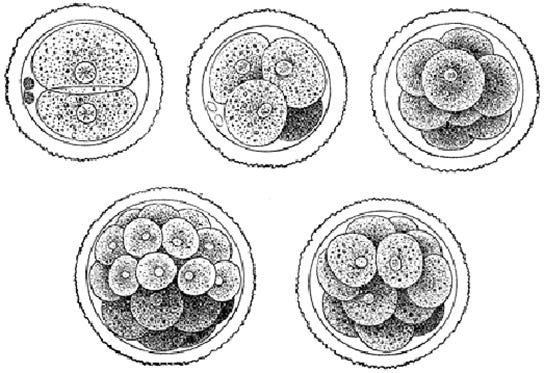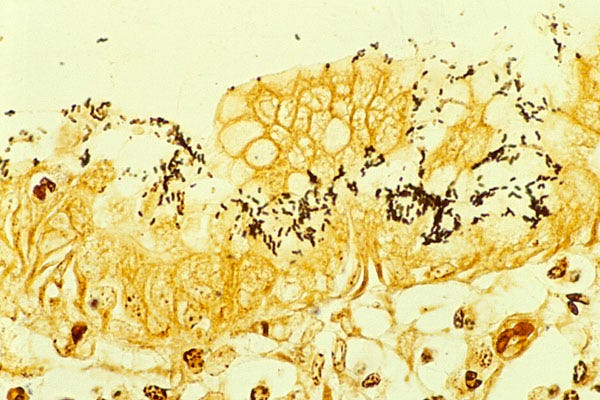We have now posted Part 3a of our series on how metastases arise. Below is our summary for nonscientists.
Part 1 of this series discussed the basics of metastatic disease. See the summary for nonscientists.
Part 2 discussed features of human biology that are important in understanding cancer and metastases. See the summary for nonscientists.
Part 3 discussed five ways in which these normal features are altered during the development of cancer and metastases. See the summary for nonscientists.
In Part 3a, we discuss how the malignant properties of normal cells are switched on, beginning with rapid or otherwise inappropriate cell division.

Rapid cell division occurs physiologically (i.e. normally) during embryogenesis and fetal and childhood growth, as well as in adults to repair damaged tissue and to replace cells in organs with rapid cell turnover. Unlike the operation of a machine, this process involves a complex, nonlinear series of events that cannot be easily understood with a simple diagram.
Two important events in cell division are (A) activation of a cell division trigger and turning off opposing enzymes and (B) verifying that the DNA is copied correctly before proceeding with cell division. If the DNA is not copied correctly, then either the cell stops dividing and enters the DNA repair process or the cell self-destructs through a process called apoptosis.

Cancer risk factors may create driver mutations (i.e. those that cause cancer) in KRAS and other genes. For example, tobacco smoke contains over 70 carcinogens, including some that interfere with DNA replication and produce KRAS mutations. Normally, the KRAS protein functions as an on-off switch for cell division; however, the mutant KRAS protein may be stuck in the "on" position, causing uncontrolled cell division. KRAS mutations are considered driver mutations in lung, pancreas and colorectal cancer. Tobacco leaf, when burned during cigarette smoking, produces carcinogens that enter the lung and bloodstream and are metabolized in the liver to form other compounds. These compounds may then enter cells, attach to DNA and cause mutations in KRAS, p53 and other genes.
The DNA repair process typically corrects errors before DNA is duplicated. However, since DNA has 3 billion base pairs and the usual DNA duplication error rate is 1 per 100 million base pairs, this means each round of DNA replication produces an average of 30 errors. A mutated KRAS gene may become a permanent part of the cell's DNA and direct the cell to divide continuously, particularly when associated with inflammation, although this may take years to occur.
p53 is the most commonly mutated gene in human cancer. About half of all cancers have p53 mutations or deletions and the rest may inactivate p53 through other mechanisms. The p53 protein ensures that cells repair any damaged DNA before cell division by inducing cell cycle arrest (stoppage) to allow time for DNA repair to occur. If the DNA damage is not fixed, the p53 protein forces the cell to undergo apoptosis or to leave the cell cycle. If p53 is mutated, then cells that were supposed to die will persist and additional mutations may accumulate that can accelerate inappropriate cell division.

Bacteria and viruses can also directly cause cancer, although this is less common in Western countries. Helicobacter pylori, a common bacteria in the stomach, stimulates lymphocytes to proliferate and attack the bacteria; since the lymphocytes typically cannot destroy the bacteria, they persist indefinitely. Over time, they may acquire malignant properties and cause gastric MALT lymphoma, a low grade (nonaggressive) lymphoma. This process is typically reversible; antibiotics can kill the bacteria, end the chronic immune system stimulation and usually cause regression of the cancer, although it may take up to 2 years.
Epstein-Barr virus can stimulate lymphocytes to proliferate and become malignant through a different process than H. pylori. An EBV protein mimics a protein that provides a growth signal to B cells, which, if persistent, may cause malignancy. Although 95% of the world's population is infected by EBV, EBV related lymphomas are rare because an intact immune system typically keeps this infection in check and prevents these B cells from developing malignant properties.
Click here for the full essay with more images and references.
Part 3b will discuss how the migration property of normal cells is switched on during malignancy.
Index to Nat’s Substack articles
If you like these essays, please share them with others.
Follow me on Substack or LinkedIn or through our Curing Cancer Newsletter.
Follow our Curing Cancer Network on LinkedIn and Twitter. Each week we post interesting cancer related images of malignancies with diagnoses.
Latest versions of our cancer related documents:
American Code Against Cancer (how you can prevent cancer)
Email me at Nat@PathologyOutlines.com - unfortunately, I cannot provide medical advice.
I also publish Notes at https://substack.com/note. Subscribers will automatically see my notes.
Other social media - Tribel: @nat385440b, Instagram / Threads: npernickmich



